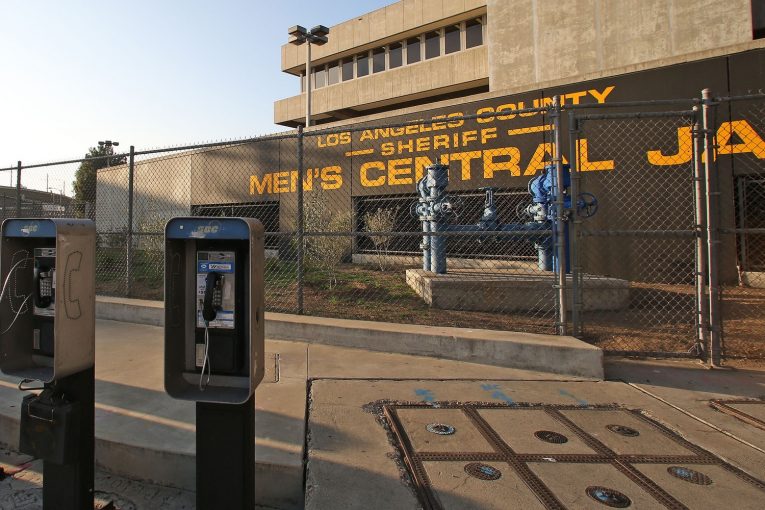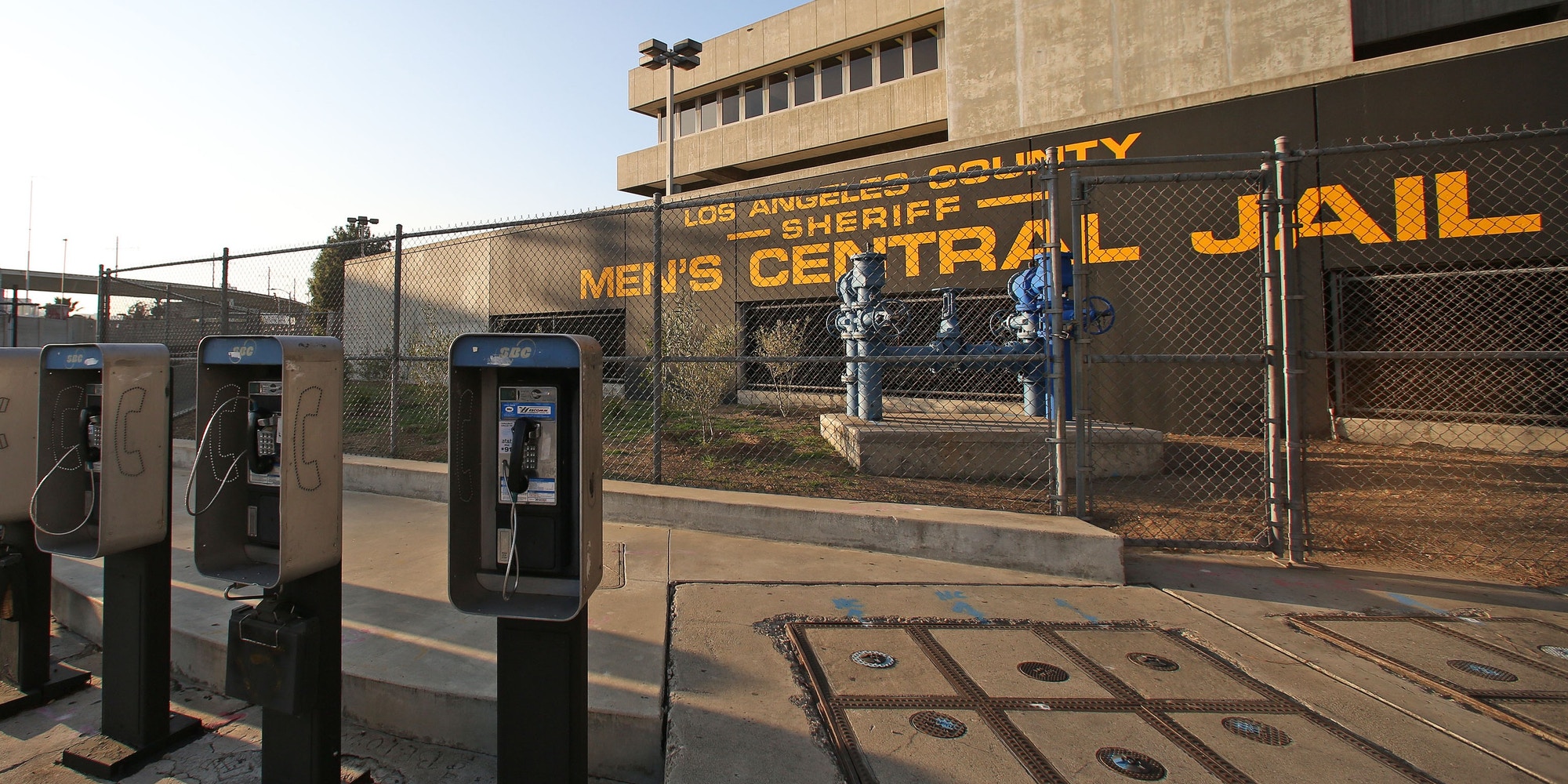

Forty-eight people have died in LA County jails since the start of 2023.
By Sam McCann
In the first two weeks of the new year, three more people have died in Los Angeles County jails. Their deaths continue a deadly trend; 48 people have died in the system’s custody since the start of 2023.
That staggering number far exceeds that of New York City Department of Correction (NYC DOC) facilities, where the rising number of deaths at the Rikers Island jail complex has led to a mounting crisis that has received nationwide attention.
The death toll in LA jails—the nation’s largest jail system—is driven by severe overcrowding, inadequate care inside jails, and a failure to offer robust alternatives to incarceration. A horrifying video smuggled  out of Men’s Central Jail in June, which shows jail staff neglecting to intervene in a violent assault that stretched for more than ten minutes, underscores the urgent need to reduce the jail population and expand community-based alternatives to incarceration.
out of Men’s Central Jail in June, which shows jail staff neglecting to intervene in a violent assault that stretched for more than ten minutes, underscores the urgent need to reduce the jail population and expand community-based alternatives to incarceration.
“Our jails are killing people—disproportionately Black and Latino men who are held pretrial—because the county has crammed the facilities beyond capacity,” said Michelle Parris, program director of Vera California. “Jail has become the county’s default response to poverty, houselessness, and other unmet needs. Our communities would be safer if we address the root causes of instability by investing in community-based alternatives to incarceration that are proven to work, and that do not result in a new death every week.”
What’s killing people in LA County jails?
Overcrowded facilities are the most significant single factor driving jail deaths in Los Angeles. The jail system has operated at as high as 16.7 percent over capacity since the start of last year. This means that not only are the facilities physically crowded, but resources are also being stretched beyond their breaking point.
The issues begin in intake, where newly incarcerated people are processed. People who have passed through the intake facilities have described them as “a living hell,” where people are left to sleep without bedding or blankets on floors covered in garbage and waste.
Beyond the squalid and cramped conditions, overcrowded jails also limit access to resources, especially medical care. Incarcerated people requesting medical care say they have faced cruel or indifferent treatment from jail staff. In particular, Los Angeles County jails provide horrendous standards of mental health care—despite being the largest provider of mental health care in the United States, with 42 percent of people currently detained there diagnosed with mental health conditions. People are chained to tables by jail staff, endure filthy living conditions, and sometimes do not even receive clothing. The county has also failed to adequately staff its jails with mental health care providers; in February 2023, 44 percent of jail mental health staff positions were vacant.
Severe conditions in the county’s jails provoked a visit from a panel appointed by the United Nations Human Rights Council in April and, in May, triggered protests by health care workers in the jails, who say that staffing shortages have left them unable to provide care to patients in these dangerously overcrowded facilities.
“We know that people who are here deserve humane conditions,” Katrina Thompson, a registered nurse, told CBS News. “They deserve health care . . . and they deserve to be safe when they are here.”
Who has died in county jails since January 2023?
Los Angeles County does not report the names of the people who die in their custody on its own, instead providing merely basic information such as the person’s age, date of death, whether they were held pretrial or were awaiting sentencing, and where they were detained. However, thanks to a Freedom of Information Act request, journalist Keri Blakinger obtained a list of the names of everyone whom the Sheriff’s Department reported to have died in custody between January and November 2023. Seven additional people have died since November 3 whose names have not been reported.
 While we now know the names of many of those who died in custody, the county continues to share only sparse details about the nature of the deaths. When the county does publish autopsy reports, organizers say it provides inconclusive information and, in some cases, misclassifies deaths. Moreover, the death count itself is incomplete: at least one person, former NFL player Stanley Wilson Jr., died while detained in February but has not been included in the official count.
While we now know the names of many of those who died in custody, the county continues to share only sparse details about the nature of the deaths. When the county does publish autopsy reports, organizers say it provides inconclusive information and, in some cases, misclassifies deaths. Moreover, the death count itself is incomplete: at least one person, former NFL player Stanley Wilson Jr., died while detained in February but has not been included in the official count.
What are the demographic breakdowns of in-custody deaths?
While the county does not share the names of those who died in its jails unless legally compelled to, it does share some important demographic information about them. Of the people who have died in Los Angeles County jails since the start of 2023, 27 percent were Black, and 48 percent were identified by the Los Angeles Sheriff’s Department as Hispanic. The majority of those who have died—26 of the 48—were held pretrial, many because they could not afford bail.
How are people dying?
Los Angeles County has not yet publicly issued causes of death for everyone who has died in county jails in recent months. However, even once autopsy reports are finalized, they don’t tell the whole story: when the coroner rules that a death is the result of “natural causes,” jail conditions can still be to blame. Researchers have found evidence of physical harm in more than half of “natural” county jail deaths.
For instance, in at least one jail death, the county reported the cause to be natural, even though an inspector general’s report determined that the deceased person showed signs of hypothermia. During the time this person died, people held in the jails slept in garbage bags to keep warm—despite the staff having hundreds of thousands of thermal underwear sets available. Jail officials declined to distribute those sets, stating they were not required to and were concerned that people would destroy or misuse them.
There has also been a dramatic rise in suicides. More people died by suicide in county jails in 2021, the most recent year with complete records, than in any year since 2013. Those suicides were likely driven in part by the dire conditions in the jails, which Mark-Anthony Clayton-Johnson, chair of the Sybil Brand Commission, which inspects county jails, called a “recipe for hopelessness.” Inadequate mental health care only compounds the issue.
What can we do to prevent more people from dying?
A critical first step to prevent more jail deaths is to jail fewer people. By reducing the jail population, the county can begin to address the most acute issues threatening the lives of incarcerated people, as well as reduce the burden on jail staff.
There is hope in that regard. This June, the American Civil Liberties Union (ACLU) settled a lawsuit against the county over the “barbaric” conditions in its jails. The settlement commits the county to a number of limits, including how long people can be detained in the intake facility and how long they can be handcuffed or tethered to chairs and benches there. It also requires the county to divert some people into alternatives to incarceration rather than detaining them in jails.
Alternatives to incarceration, like community-based supportive housing, have proven to be safe and effective. In one such program, 86 percent of participants had no new felony convictions after 12 months, and 74 percent had stable housing.
If the county is interested in building real public safety and reducing the death toll in its jails, investing in these programs is the easiest path forward. A study by the RAND Corporation found that as many as 61 percent of people held in Los Angeles County jails with mental health conditions are appropriate candidates for diversion into existing alternatives to incarceration. However, those services have been operating at capacity for some time. The settlement with the ACLU commits the county to expanding those offerings by nearly 2,000 beds, which should help meet the urgent need.
It is critical that the county follow through on this commitment, as its recent history is dotted with false starts to reform. In 2021, county leaders committed to closing the decrepit and dangerous Men’s Central Jail within two years. Those two years are nearly up—yet the jail is still operational, with no concrete plans to close the facility in the foreseeable future.
Beyond the immediate next step of reducing the jail population through more robust community-based services, the county also needs to work to address the wholly inadequate conditions facing those who remain detained. Shoddy and understaffed health care and mental health services are likely contributing to the death rate in custody. The county can meet its basic obligation to prevent more deaths by reducing the jail population and backfilling positions for care providers to help alleviate the staffing crisis.
“The prolific use of jail is not making Los Angeles safer,” said Parris. “Research shows even 24 hours in jail is so destabilizing it makes someone more likely to have further contact with the system. Our jails in Los Angeles are not only destabilizing to thousands of people, but also potentially deadly. We need services that can meet people’s needs and prevent crises that lead to incarceration, and we need programs that are a supportive pathway out of jail for those returning to our communities.”
Originally published by Vera Institute of Justice
